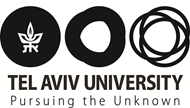Nano-Satellite Gyroscope
Carmon’s laboratory research collaboration
Our research includes designing, fabricating, and demonstrating a new type of nanosatellite gyroscope. Our developed gyroscope is on a silicon chip with a volume and weight 1000 times smaller than the current technology. In detail, current Ring Laser Gyroscopes (RLG) are based on cm-scale mirrors that reflect light to circulate in a 10-centimeter scale device (see photo on the left-hand side). The weight and volume of current state-of-the-art RLGs make their integration into nanosatellites challenging. Conversely, our RLG relies on light circulating in a glass disk, which is 10 times thinner than hair width (right photo). Gyroscopes sense rotation in three-dimensional space without relying on external observations, allowing a spacecraft to determine its orientation. Gyroscopes are hence essential for spacecraft attitude determination, which is critical for a spacecraft to know its position and perform its mission
Our proposed on-chip disk-based ring laser gyro is expected to reduce the thickness, volume, and weight of the commercial RLG by a factor of 1000.


